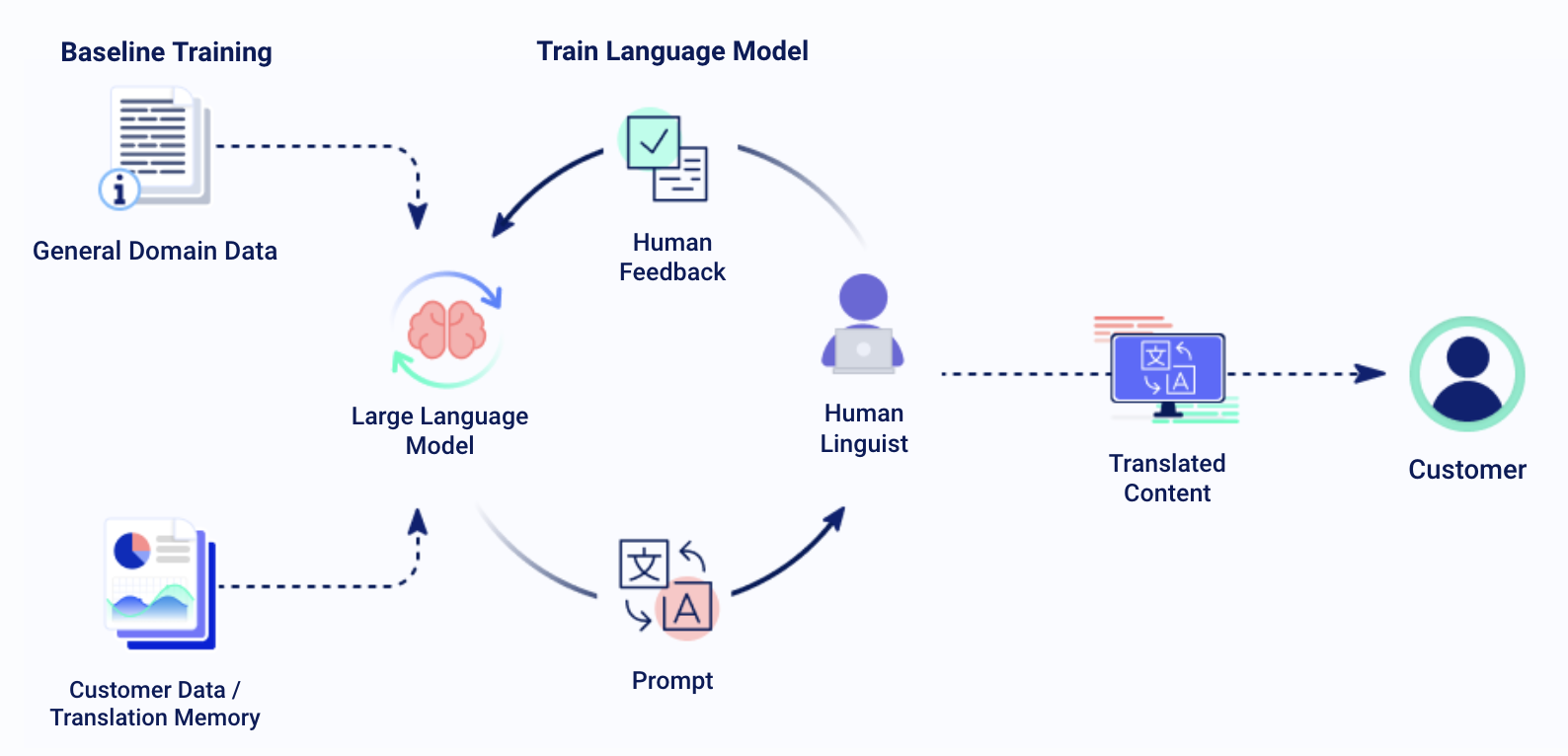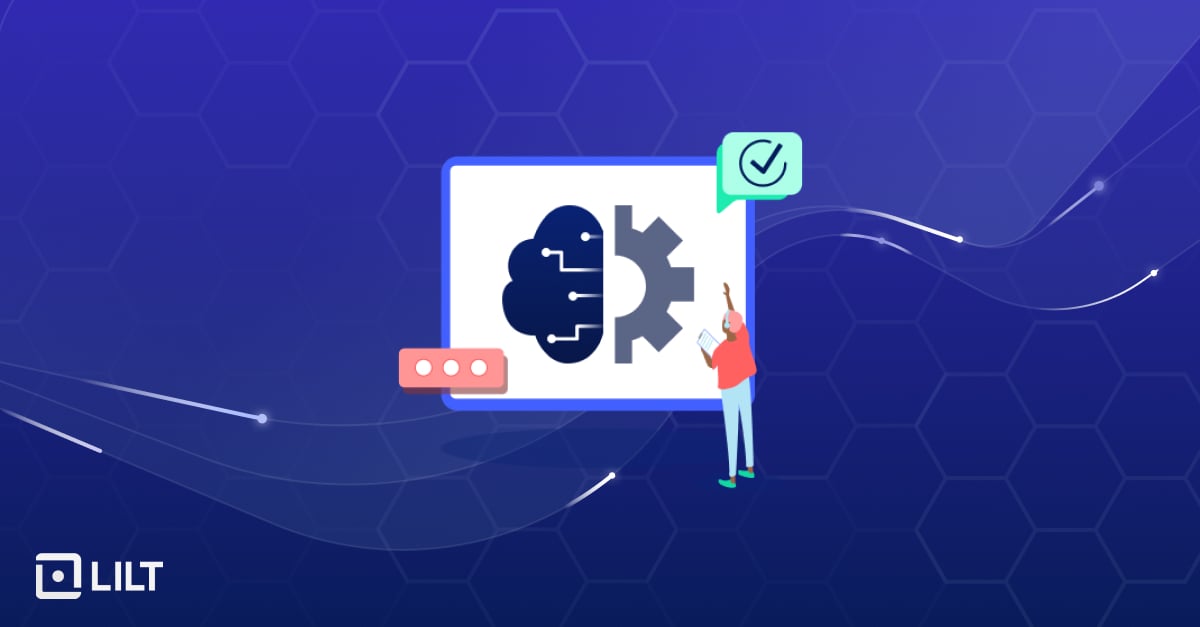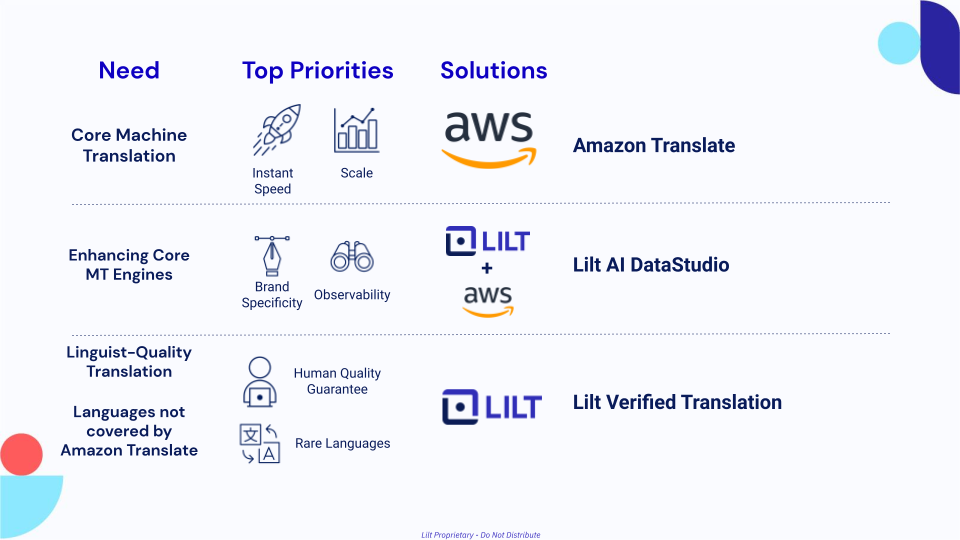Unlocking the Power of Collaboration: Linguists and AI Translation Systems

The impact of AI on the localization industry has created both excitement and apprehension among linguists and businesses. While the use of AI is becoming more prevalent in business strategies and priorities, there is still concern and skepticism surrounding its implications on job security and the level of translation quality and value.
However, with the right combination of human linguistic expertise and AI translation systems, businesses can get high-quality, fast translations that scale with their growing needs.
In this blog post, we explore one of three key topics discussed from our AI day virtual event, the future of work with AI technology. Here, we dive into the various benefits of using AI translation solutions, real-world examples of how they've improved collaboration, and tips on evaluating AI translation solutions for your business goals.
Key Takeaways
• Takeaway 1: AI-driven translation provides a solid foundation for linguists without sacrificing quality.
• Takeaway 2: Human Adaptive Feedback translation models are key to maximizing localization budgets and maintaining high levels of translation efficiency.
• Takeaway 3: By embracing AI, linguists can become "superconductors" of content, increasing their productivity and securing their place in the evolving localization industry.
Understanding the Benefits of Collaboration between Linguists and AI Translation Systems
AI-driven translation systems have drastically changed the way linguists and translators collaborate. By leveraging AI, linguists are able to quickly and accurately translate content from one language to another, resulting in improved accuracy and efficiency when creating multilingual content—all without sacrificing quality.
Contrary to the belief that faster AI-driven processes may lead to less work for linguists, increased productivity is key to maximizing localization budgets and creating more work opportunities for linguists. In fact, using an AI translation solution allows linguists to focus more on their expertise and creativity by removing the heavy lift of syntax generation. Other AI translation benefits for both linguists and businesses include:
• Reducing errors in translations
• Improving brand consistency
• Accelerating time-to-market
• Expanding localization budget
• Scaling to meet growing content demands
• Enabling linguists and translators around the world to work together more effectively than ever before—regardless of geography or time zone
"AI provides the same, very solid foundation for linguists not just to work faster, but actually to use more of their pure linguistic expertise. One of the things that AI translation does differently with Contextual AI is we’re able to meet productivities that are already three to four times faster than traditional localization technologies."
.png?width=59&height=59&name=Frame%2023%20(2).png) Andreas Laursen
Andreas Laursen
Director of Program Management, Lilt
How AI Translation Systems and Human Adaptive Feedback Have Improved Collaboration
Many traditional localization technologies have matured and stabilized, leading to rigid cost structures for businesses and limited productivity growth for linguists. That said, when using AI translation systems, human feedback loops and data-driven processes are key to improving performance over time and giving linguists more control over their productivity and value to customers in real time.
But what is Human Adaptive Feedback?
Human Adaptive Feedback (HAF) is a type of AI translation solution that leverages both linguist expertise and machine power in order to reduce cost and improve translation accuracy and velocity. As linguists are working, the AI engine learns from their feedback in real-time; this way, it continuously becomes more accurate as it learns and retains its engine with more rounds of human feedback over time.
At Lilt, our Contextual AI Engine is run by Lilt large language models and is instantly retraining, learning from linguist feedback in real-time. Trained on 5x more data than the models they are replacing, Lilt’s LLMs are built on transformer architecture and deliver translation with higher accuracy, ultimately driving improved translation quality and increased translation velocity. The instant retraining of the models further enables higher accuracy, greater consistency, and closer alignment to each customer’s specific brand voice. Our system allows skilled linguists to review AI-generated translation suggestions instead of starting from scratch, guaranteeing quality and powering continued adaptation with real-time feedback.
This is what an ideal workflow looks like:

In addition to automating mundane tasks like spell-checking and punctuation correction, quality assurance tools should include features such as automated error detection and reporting that can analyze text samples from large volumes of data and quickly identify potential errors. The best localization tools should be able to detect subtle nuances between languages that may otherwise go unnoticed, such as slang or dialects.
Evaluating AI Translation Solutions for Your Business Goals and Needs
Evaluating AI translation solutions for your business goals and needs is an essential step to finding the right solution for your organization. To ensure you make the best decision, it’s important to understand your current needs and goals, compare how different AI translation solutions are effectively using In-Context Learning, evaluate their cost and scalability, and identify potential challenges and areas for improvement.
The first step in this process is to identify your organization’s current needs and goals. Do you need a solution that offers fast turnaround times? Are accuracy levels important? Are there specific languages that need translating? Taking the time to consider these questions will give you an understanding of what type of AI solution may be suitable for your organization.
In addition to researching features, take into account factors such as cost efficiency, scalability options (i.e., if you plan on expanding operations at any point), quality checks (i.e., does the software guarantee accuracy?), customer service availability (i.e., do they provide dedicated support?) when assessing different AI translation solutions. The goal here is to compare how each solution can meet your organizational goals while minimizing costs associated with manual quality checks or other services related to translations.
Finally, look out for potential challenges or areas of improvement when evaluating AI translation solutions for your business objectives and needs. For example,
• Does a certain solution require additional hardware investments in order to run properly?
• What about language restrictions?
• Do certain languages pose problems when it comes to accuracy or speed?
• Is there room for customization or integration with other programs within the software package?
Taking note of any challenges upfront will help you make an informed decision on which AI translation solution is best suited for achieving success with multilingual content priorities within budget constraints while still ensuring high levels of translation accuracy and speed.
Looking for an AI translation solution to help you achieve your enterprise goals and beyond? Look no further than Lilt - the leading AI solution for enterprise translation. Regardless of your current level of AI familiarity, Lilt's technology is designed to make the process as simple as possible.
Speak to one of our specialists to find out more about Lilt's pricing and product capabilities to begin transforming your localization approach right away. Check out a 90-second video of our AI platform here.


